Types of branching narrative trees
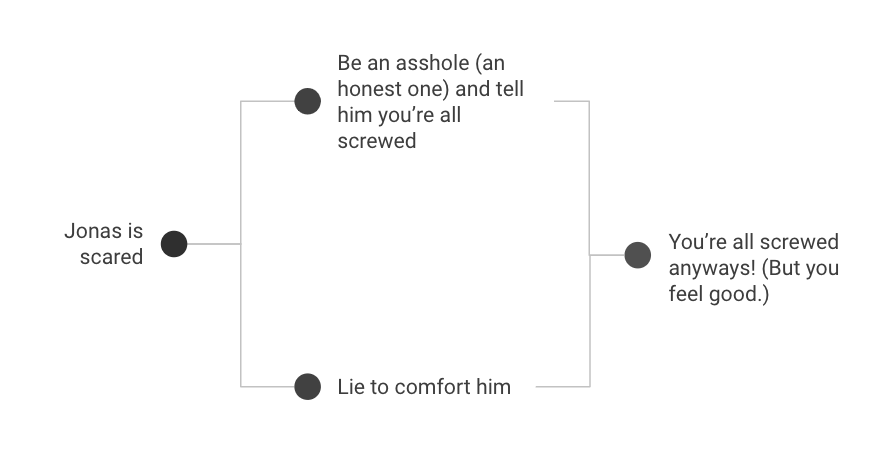
I’m always surprised by how differently story-driven games with mechanics where content branches approach their narrative design. Each game seems to have its own understanding and implementation of what the player will feel is a satisfying experience.
There are only certain types of systems in video games where choices and branching have been implemented successfully, at least so far. Based on where the player agency is in a game, I think most of the times choices are:
- Choices in action. The player chooses through which path the story continues (usually by controlling the actions of a character), and that defines the subsequent plot points that take place in the game.
- Choices in communication with characters. Here the player chooses how to interact with the other characters (what to say, how, and to whom). Variations in the plot are not expected, but as interpersonal relationships usually develop along a story, these might be intertwined at some level.
Then, the choices you make are expected to make some impact in the following scenarios, either in the way the story and characters progress, or just in the immediate player experience. Based on the level of that impact and how that dictates what’s the content delivered by the game, we’ve had something like:
- Irrelevant choices. Your choice doesn’t make any impact in anything that happens after the choice is presented, beyond, maybe, a validation text line. I would say in these cases, the player very often understands that their choices didn’t make any impact. Is this the most memorable experience? Is this what the player was waiting for? I think many times the developer doesn’t even care, and the presentation of choices was just a stylistic choice.
- Plot-related relevant choices. Your choice produces a variation in the story that’s closely dependant on the choice, so a new branch emerges from the trunk of the story tree. Then the new path might merge back to the tree, or if might follow a new path that keeps on branching with new variations dependant of subsequent choices.
- Focused relevant choices. I would say that many times these are just the result of ambitious game designers who know how much of a hell creating and implementing branching stories is, but still want to explore these realms of narrative design. These approach deviates from the typical “choose your own story” approach, that is hyper focused on plot, and tries to find other places where the processes involved in making choices can get emotionally meaningful or impactful/entertaining in some way.
In my understanding, a game developer always faces a choice himself when he needs to position his narrative design in both of the mentioned spectrums, with all the implications that might cause in the production process.
I think most of the times developers prefers to stick to the usual formulas, to whatever he knows how to do already, or to whatever he things can be done. Also, as games are already expensive productions that can grow in complexity exponentially by just adding the smallest variations, it’s not that common to see developers that can or want to take their time exploring new approaches.
Oxenfree’s dialogue system
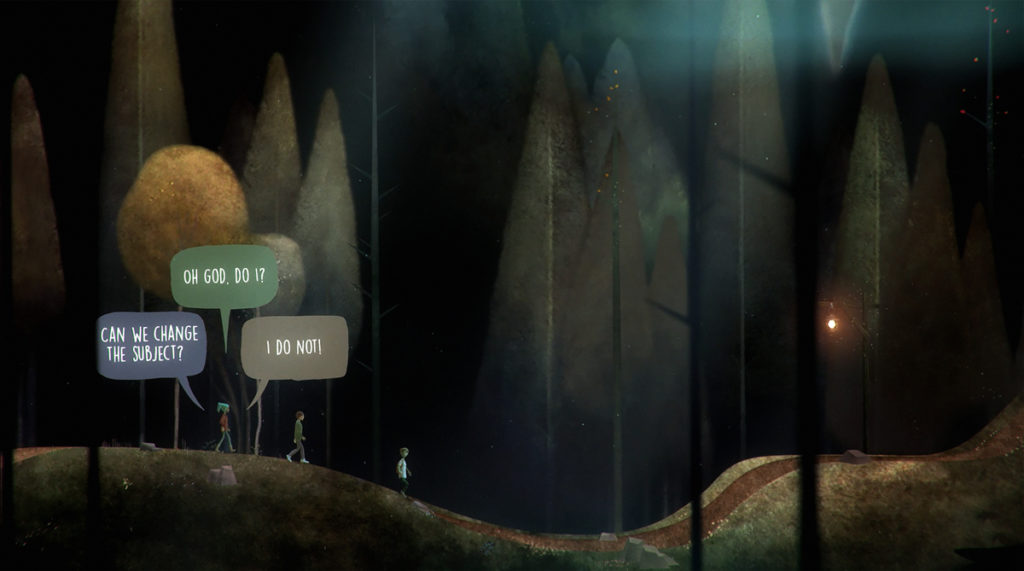
Oxenfree has story choices that develop the action towards several possible endings, but for the sake of this analysis, I’d like to focus on its dialogue system, as the main mechanic on which the game is built is actually talking. Also, following up my previous classification of choices and branching experiences, in this game, the dialogue system produces relevant choices focused on tone.
Oxenfree does have an entertaining story, and there’s action and goals for the player. However, if the experience resulting of playing the game is memorable at any level, that’s possible, I think, because of the interludes where the player needs to walk to reach her next destination in the map.
During those segments, the main character, Alex, is accompanied by Jonas, her step brother, with whom she keeps long conversations on various topics, with various meanings, and in various tones. In this scenario, the game articulates a simple but rich dialogue system where the player can decide, for each interaction, things like:
- To remain silent instead of giving an answer.
- To interrupt other player’s interventions.
- To be truthful and follow an ethic path, or to lie with a purpose.
- To protect the emotional health of other characters or to hurt it.
Here are some screenshots showing choices that are presented along those lines:
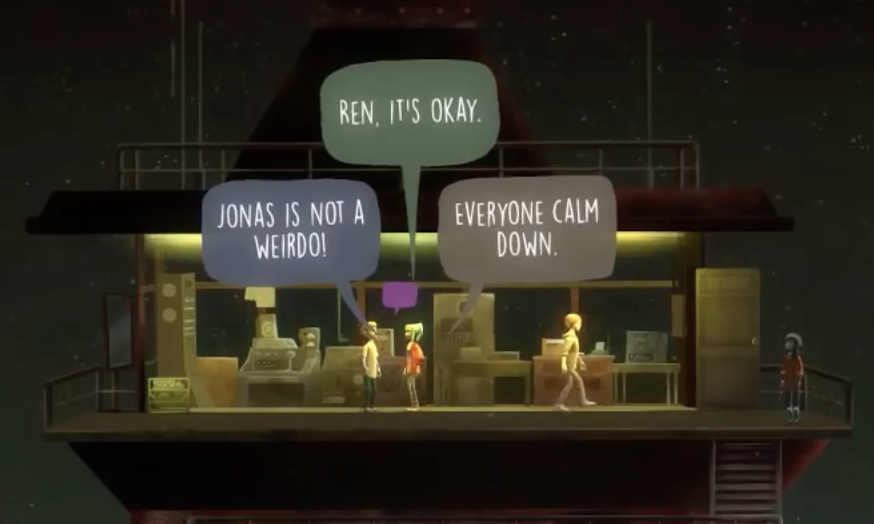
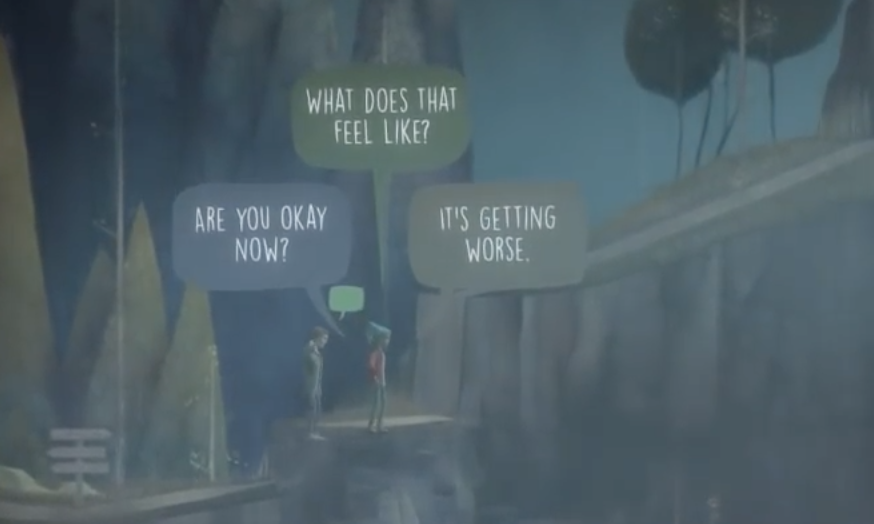
Components that support Oxenfree’s dialogue system
A big part of what makes Oxenfree dialogue system unique is, I think, the many places where it resembles real life interactions. That we can find in details, like, you stop hearing a character if you move far away, but also in the overall development of a conversation.
In this sense, if you think about our daily life and the way we interact with people, each of us constantly face many of these choices, although that doesn’t mean that any of them needs to make a clear direct impact in the way future unfolds.
It’s, more than anything else, a tonal choice.
What do I want these few minutes with Jonas to feel like? Do I want to try to teach him that he shouldn’t worry because ghosts don’t exist? Do I want to give him a rough time because he’s an idiot? Do I want to lie? How do I want to live my live?
There’s no specific choice that opens a path towards any of those scenarios, but each choice is a validation of my own ethics and views, an exploration, an attempt to balance the equilibrium of the characters.
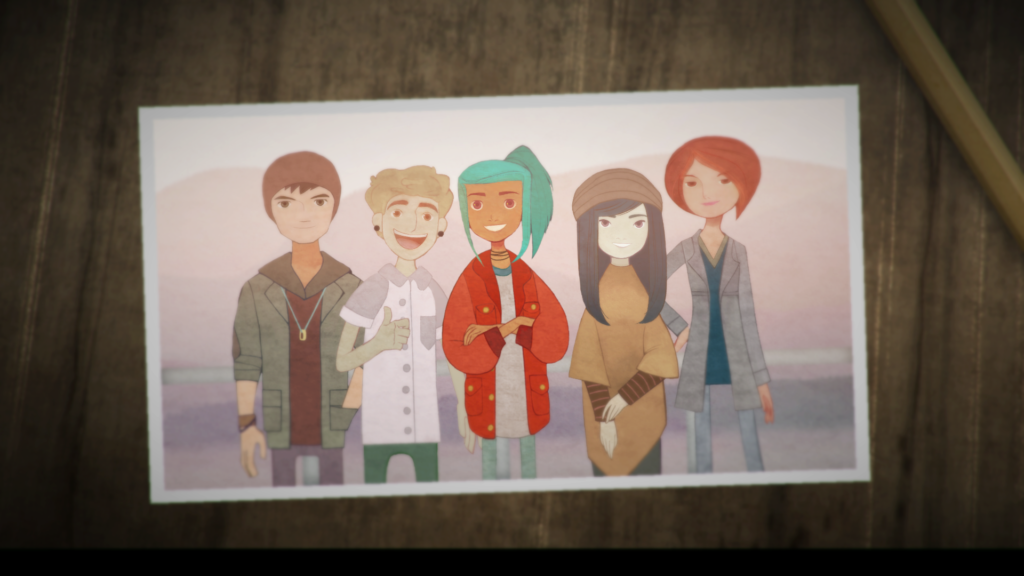
Besides resembling the way dialogues work in real life, to oil the machine that lets those choice juices flowing, the choice design in Oxenfree has some other ingredients:
- To let the player care about the characters and their feelings, the story has believable relatable characters. We all relate or want to relate to the psychology of teenagers, as we’ve all been there and recognize how difficult and fascinating that period of our lives is in many ways.
- An horror story as the overarching plot provides the system with numerous opportunities for emotionally impactful events. The paranormal genre allows the writers and designers to pace the overall progression, but also to add urgency and rise the stakes in a natural way and in the intervention/response granular level.
Wrapping up Oxenfree’s narrative design
There are some other sources of narrative in Oxenfree and other systems and components that make the game what it is, but I didn’t find any specific inspiration in other places outside the dialogue system.
I would, maybe, mention how some choices in narrative development, instead of supporting the strong points of the design, create some level of dissonance.

Although the characters are well written and portrayed, some times they stay nearly numb when they react to what’s happening to them, including supernatural events. For example, a character commits suicide, then there’s a bit of commotion, but everything goes back to normal fast. To say it in a way, the spirit is in the story more than in the characters. For me, that’s lowering the stakes that keep the choices interesting, and also preventing this game from becoming the remarkable horror game it could have been.
Despite that, Oxenfree is still an enjoyable narrative driven experience that shines for its design elegance and sparkles of innovation, and I didn’t even mention any of the art highlights, like the beautiful art used in backgrounds or the original soundtrack, that turn the game into an even more enjoyable playing experience.
Leave a Reply